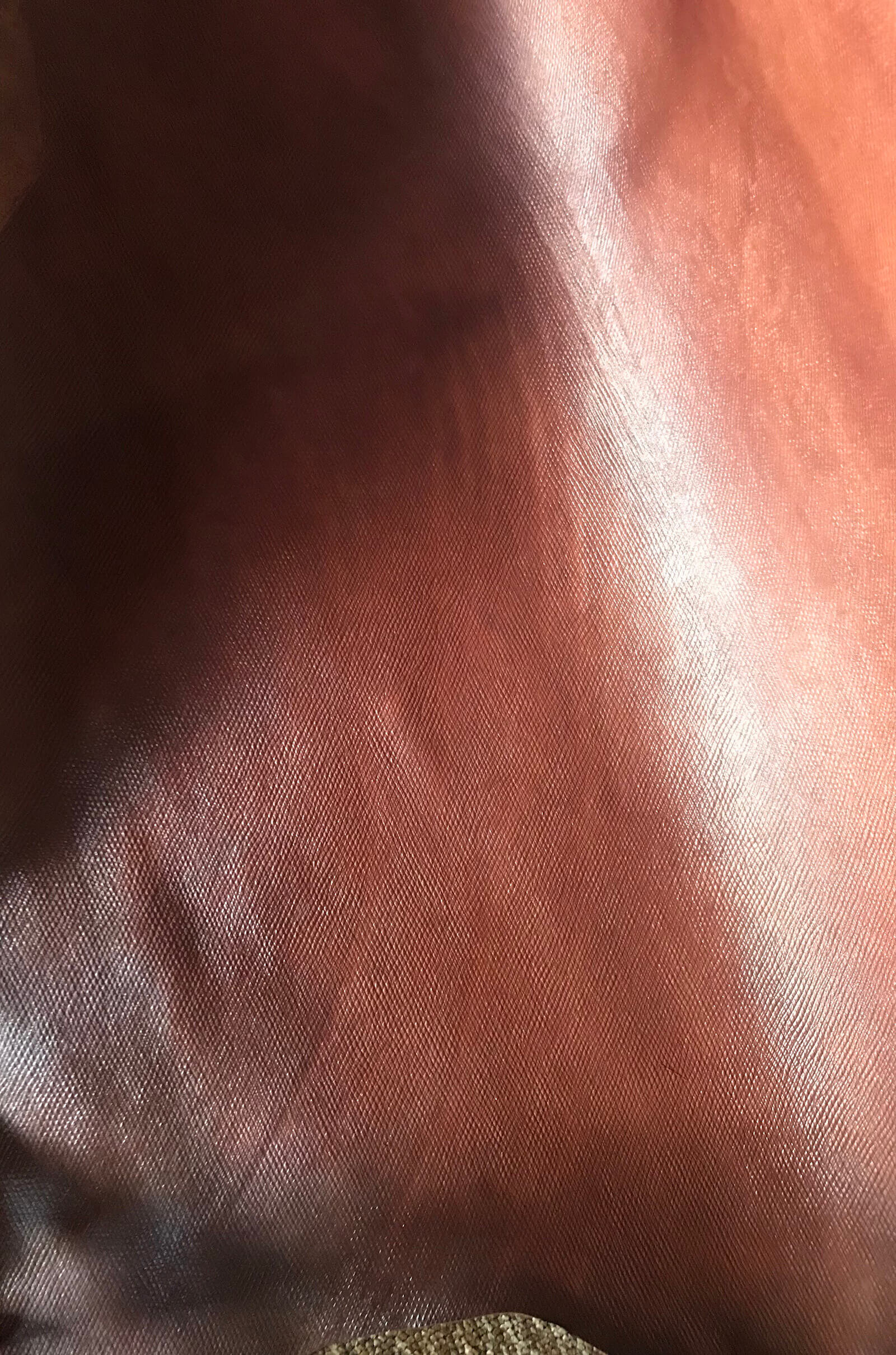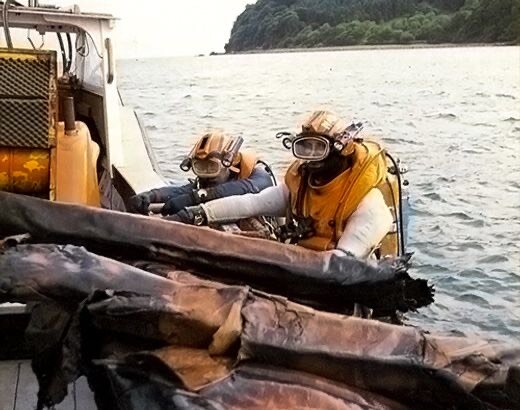Baker’s Russian Leather
Baker’s Russian Leather is a reproduction of the legendary and coveted Russian Leather. We studied the only known remaining, 18th century rolls of leather recovered from the shipwrecked Metta Catharina off the Devon/Cornwall coastal border, to recreate the leather’s unique colour, print, thickness, texture, supple yet firm handling, smell and durable qualities. We researched what is known about the tanning techniques and the naturally occurring materials that the original Russian artisans would have had available.
Being no strangers to historic bark tannage techniques, we are proud to present a reproduction of the mythical leather using techniques and materials conscientiously sourced to revive the lost art of its production.
As the only remaining Oak Bark tannery in Britain, our process is the closest tanning method to that used to produce the original Russian Leather. Other production methods do not preserve the skins natural fibres and so lose some of the tensile strength. Our leather maintains the strength and hardwearing characteristics that made the Russian leather so sought after and valued throughout the world. We use premium calfskins sourced locally in Devon and soak them in pits of lime. Each hide is then de-haired by hand before being soaked in pits of three different barks; oak, willow and birch, using our own lengthy method of tannage which, in itself is a dying art. We have patiently experimented with different quantities of these barks, to rediscover the ancient recipe that yields a leather that smells and handles as well as the original Russian Leather.
Once tanned each piece of leather is dyed, printed with the characteristic cross hatch, and hand dressed with a secret balance of natural oils, blended to preserve the leather’s smell, flexibility, strength and longevity and stay within the confines of its historic origins. This includes Birch oil that is essential to the Russian Leather’s success as it made it both water resistant and repelled insects whilst infusing the leather with an aroma that made it instantly distinctive and famous within high society in the 17th until the early 20th century.
It has taken us 6 years and many, many trials and variations, but we are now confident that we have perfected the art and are able to resurrect Russian Leather and prevent it becoming a lost artefact.
We have focused on every detail from the picking of the best hides, the historic bark tanning, to our own secret dressing and the hand application and it seems fitting that the Russian Leather, found off the South West coast of England, is reproduced in Devon. Tanning has always been led by the senses and our experts are happy with the smell, look and feel of our Russian hides.
THE HISTORY
Russian Leather is a legendary material that, until 1970’s, was lost in history. During the 17th until the 20th century, Russian artisans and small communities came together to tan calf, reindeer and occasionally horse, sheep and goat hides. Using closely guarded secret recipes of mixed tree barks, the hides were tanned over long periods of time to preserve the natural fibres of the skin creating a leather with superior strength and wear. Once cured the leather was treated with birch tar oil, as well as other naturally occurring oils and greases, making it resilient to water and insect damage and giving it a wonderful, distinctive aroma.
Russian Leather was a prized commodity in Imperial Russia’s trade with the West. The leather was preferred by luxury furniture makers, book binders and boot makers. Its fragrance became popular in Paris and America in fashionable circles and items made using Russian Leather were documented in Wills and Estates, such was its value. Its popularity rose until the Russian Revolution and in the chaos, disorder and destruction that followed the secret art of the leather’s tanning was lost.
That was until in 1973 when a chance discovery of a shipwreck, the Metta Catharina, a 200 year old Norwegian double mast, revealed many rolls Russian leather. The ship had set sail from Saint Petersburg for Genoa, but hit a storm and sought shelter off the Plymouth Sound, Devon in 1786. It broke free of its anchor and was washed towards Raveness Point before sinking. Its hold of mainly hemp and Russian leather, as well as a few items of glass and fine china lay for two centuries under the silt of the sea bed. The discovery of the leather in such fine condition is confirmation of the unique material’s resistance to rot and water damage. The outer pieces of the rolls of leather were badly damaged by the years under the sea, however the inner hides were remarkably preserved.






